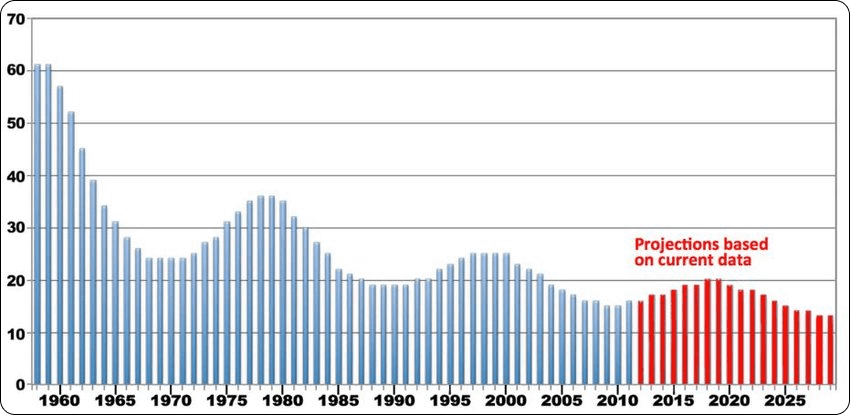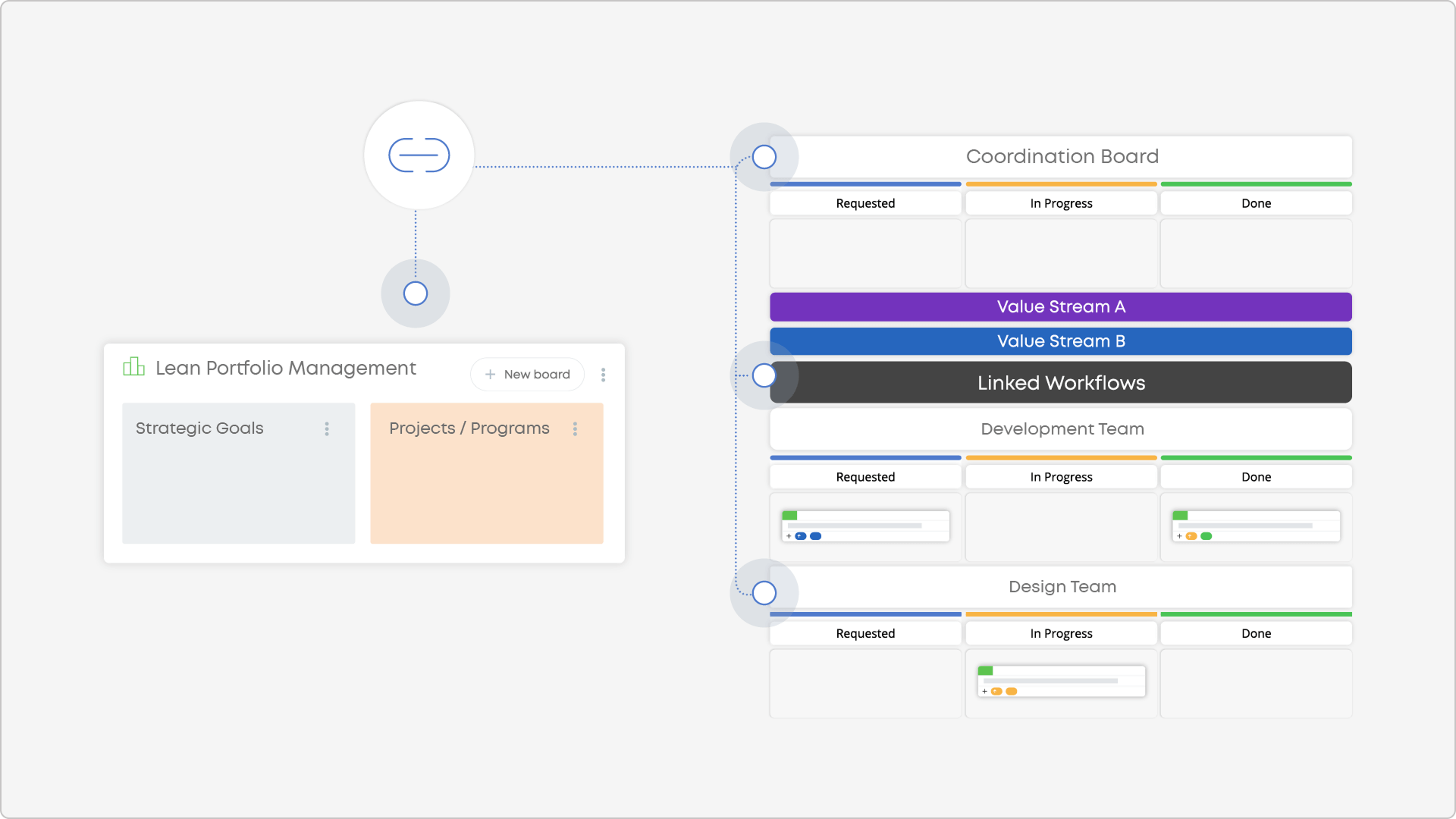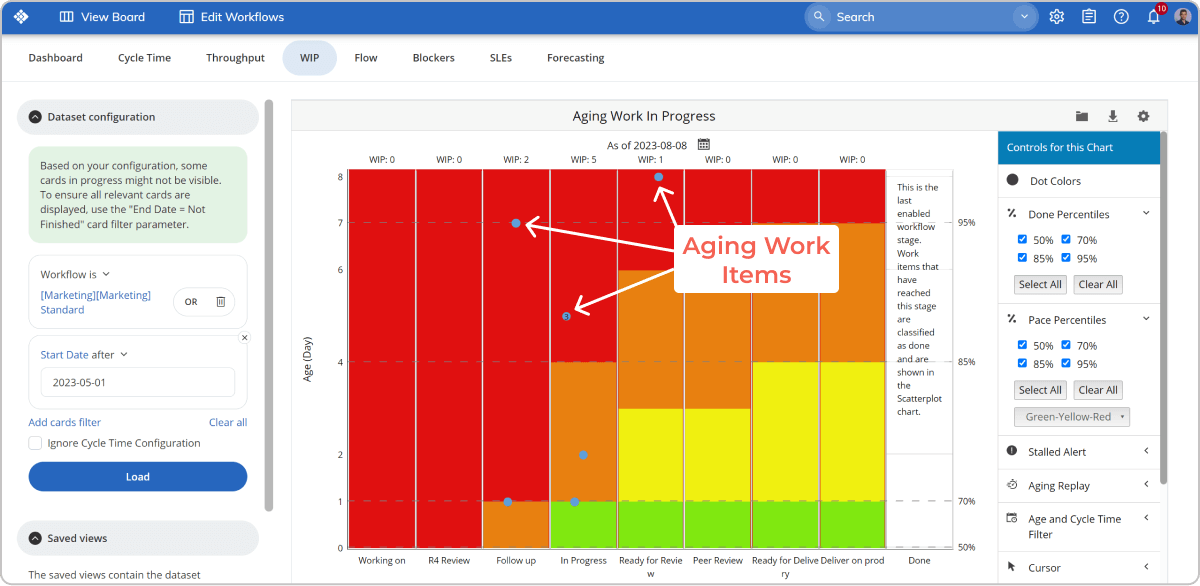What Is an Agile Organization?
An agile organization is a human-centric company that adapts quickly to changes in the marketplace or environment. Its focus is on delivering continuous value to customers through flexible structures, empowered teams, and fast decision-making.
Agile organizations are not defined by a single framework or method. Instead, they embrace agility as a mindset: prioritizing customer needs, shortening feedback loops, and building resilience through adaptability.
Why Do You Need an Agile Organizational Structure?
Agility is no longer a luxury - it's a survival requirement. Today's businesses operate in a VUCA market (volatile, uncertain, complex, ambiguous) where customer expectations shift rapidly and what excites users today may be outdated tomorrow. Or startups and disruptors innovate at lightning speed, causing traditional organizations to struggle to keep up.
The numbers prove it: McKinsey research shows that the average lifespan of S&P 500 companies fell from 61 years in 1958 to just 18 years in 2011. By 2027, 75% of today's S&P 500 companies are projected to disappear.
Many companies respond by adopting Agile practices at the team level (often in product development), usually looking to improve product development efficiency. But to secure long-term survival, agility must scale across the entire organization - from strategy to execution.
This is what we mean by organizational agility:
- Aligning all levels of the company around shared goals.
- Improving communication and transparency.
- Delivering value more frequently.
- Ensuring resources are focused on the right work at the right time.

Image credit: researchgate.net
What Are the 8 Key Characteristics of Agile Organizations?
Researchers frame agile organizations differently, but most agree on eight recurring characteristics.
- A "North star" / shared purpose and vision
- Customer-centric approach, ensuring clarity of intent
- Empowering leadership styles and a "people first" culture
- Encouraging experimentation, rapid iteration, decision-making, and learning
- Focus on value-based delivery
- Engaged culture
- Next-generation enabling technologies
- Flexible structures/networks of empowered teams
Businessmap is the most flexible software
to align work with company goals
1. Shared Purpose and Vision
Research suggests that successful agile organizations establish a "North star" as a guiding purpose that aligns teams and inspires collaboration. This clear direction not only aligns teams and employees toward common goals but also encourages them to work collaboratively toward a shared vision of success. By defining a strong vision, agile organizations can navigate uncertainties and challenges with clarity and purpose, driving motivation and alignment across the whole organization.
Gallup research shows that purpose is one of the strongest drivers of employee engagement. People want meaning in their work, not just tasks.
2. Customer-Centric Approach
Customer-centricity is non-negotiable. Agile organizations ensure that customer needs and preferences guide every decision. By maintaining clarity of intent and alignment with customer expectations, organizations can deliver products and services that truly resonate with their target audience.
In fact, McKinsey found that customer-centric companies achieve twice the revenue growth of their peers. This mindset builds trust, loyalty, and resilience in competitive markets.
3. Leadership and People First Culture
Leaders who prioritize the well-being and growth of their teams create environments where individuals feel valued, supported, and empowered to contribute their best work. By promoting autonomy, collaboration, and continuous learning, leaders inspire trust and confidence, unleashing the full potential of their teams to drive innovation and excellence.
The State of Agile Culture Report found that such cultures boost commercial performance by 277%.
4. Experimentation and Learning
Agile organizations thrive on experimentation. Teams are encouraged to test ideas quickly, learn from feedback, and adjust. This iterative approach to decision-making and learning enables organizations to respond rapidly to changing market dynamics, seize new opportunities, and stay ahead of the competition.
The State of Agile Culture Report even calls experimentation the most important leadership quality for agility.
5. Focus on Value, Not Just Outputs
Agile organizations focus relentlessly on value-based delivery. By focusing on delivering value that directly addresses customer needs and generating measurable value, agile organizations maximize return on investment and drive sustainable business growth. This value-driven approach enables organizations to prioritize efforts, allocate resources effectively, and optimize outcomes for a wide range of stakeholders.
The Business Agility Report highlights that high-performance organizations excel at value streams and relentless improvement.
6. Engaged Culture
Collaboration, trust, and transparency define agile organizations. When employees feel empowered to share ideas and feedback, innovation thrives. This engaged culture not only enhances employee satisfaction and retention but also fosters a sense of belonging and purpose, driving collective success.
Engaged cultures foster psychological safety - the foundation of effective learning organizations. (source: The State of Agile Culture Report).
7. Next-Generation Enabling Technologies
Agile organizations use modern tools for collaboration, automation, and data-driven decision-making. These next-generation technologies empower teams to work more efficiently, adapt to change more effectively, and deliver value to customers with greater speed and precision.
According to PwC, adopting modern tech architectures enables companies to innovate and scale faster.
8. Flexible Structures and Networks Teams
Instead of rigid silos, agile organizations build networks of empowered, cross-functional teams that own value delivery end-to-end. This flexible structure enables organizations to adapt quickly to evolving priorities, allocate resources dynamically, and optimize collaboration and communication across teams and departments.
A common approach is the Kanban service-oriented strategy: visualizing each function as a service, then mapping the dependencies across the value stream. This makes bottlenecks visible and increases organizational resilience.

How to Create an Agile Organization Structure
Designing an agile organization isn't about copying a specific framework. It's about aligning structure, culture, and processes with your strategy.
Here's how to make it work:
1. Anchor Everything in Strategy
Start with a clearly defined vision. Use frameworks like OKRs or Flight Levels to cascade goals across teams.
Pro tip: Businessmap lets you create dedicated strategy boards that connect long-term objectives directly to execution boards.
 Connecting strategic and work coordination boards to achieve alignment in Businessmap
Connecting strategic and work coordination boards to achieve alignment in Businessmap
2. Organize Around Value Streams
Replace siloed departments with cross-functional teams that own value delivery.
Pro tip: With Businessmap portfolio boards, you can manage multiple value streams in parallel and see dependencies at a glance.
 Visualizing a project portfolio management board in Businessmap
Visualizing a project portfolio management board in Businessmap
3. Empower Decisions at the Edges
Push authority closer to the customer. Leaders provide context and remove blockers rather than micromanaging.
Pro tip: Businessmap's role-based access gives leaders visibility without undermining team autonomy.
4. Visualize and Optimize Flow
Transparency is at the heart of agility. Use work management boards to make work visible and spot bottlenecks early.
Pro tip: Businessmap's advanced workflows and analytics track work in progress limits, lead times, and throughput to ensure smoother flow.
 Analyzing aging work items of a workflow using the Aging WIP chart in Businessmap
Analyzing aging work items of a workflow using the Aging WIP chart in Businessmap
5. Adopt Lightweight Governance
Governance should guide, not hinder. Agile governance balances alignment with flexibility.
Pro tip: Portfolio-level views in Businessmap provide leadership with the insights they need - without bureaucracy.
 An executive dashboard showing OKRs/KPIs in Businessmap
An executive dashboard showing OKRs/KPIs in Businessmap
What Is an Agile Organization Example?
A practical example of agility in action comes from Algar Telecom, a Brazilian telecom company modernizing its operations after decades of traditional management.
To align its Integration and Business divisions, Algar:
-
Introduced Kanban boards for end-to-end visibility.
-
Shared boards with customers to enable real-time feedback.
-
Used performance data to guide smarter decisions.
Supported by Businessmap, the company improved collaboration, increased agility across divisions, and gained confidence to scale with OKRs. The result was a more connected, customer-focused organization ready for future growth.
Read more: Algar Telecom Case Study →
What Are the Benefits of Adopting an Agile Organizational Model?
There are numerous examples of agile companies to prove that switching to this project management approach will lead to significant changes in how your business operates.
Being able to adapt to changing environments and customer expectations is the most recognizable one. However, let us outline a few more:
- Increased collaboration across all organizational levels
- Better alignment with business objectives and daily activities
- Increased visibility in the process lifecycle
- Faster response and better customer service
- Improved time to market
- Recognized and delighted employees
Why Agility Matters More Than Optimization
In predictable, stable environments with clear cause-and-effect relationships, optimizing resources is a logical strategy. But today's markets are anything but stable. Disruptive forces and rising complexity constantly reshape industries, and companies that over-optimize for efficiency often find themselves paralyzed when disruption strikes.
Consider Nokia. Once the world's largest mobile phone vendor, it collapsed because it couldn't keep pace with shifting technologies and consumer trends. The company became known for adding new hardware features, but this focus ultimately prevented it from adapting to the rapidly evolving smartphone market.
This is where agility makes the difference. By fostering a culture of innovation, continuous improvement, empowered teams, and safe experimentation, agile organizations can learn faster, adapt quicker, and deliver value consistently in a world that refuses to sit still.
Businessmap is the most flexible software
to align work with company goals







 Connecting strategic and work coordination boards to achieve alignment in Businessmap
Connecting strategic and work coordination boards to achieve alignment in Businessmap Visualizing a project portfolio management board in Businessmap
Visualizing a project portfolio management board in Businessmap Analyzing aging work items of a workflow using the Aging WIP chart in Businessmap
Analyzing aging work items of a workflow using the Aging WIP chart in Businessmap An executive dashboard showing OKRs/KPIs in Businessmap
An executive dashboard showing OKRs/KPIs in Businessmap

